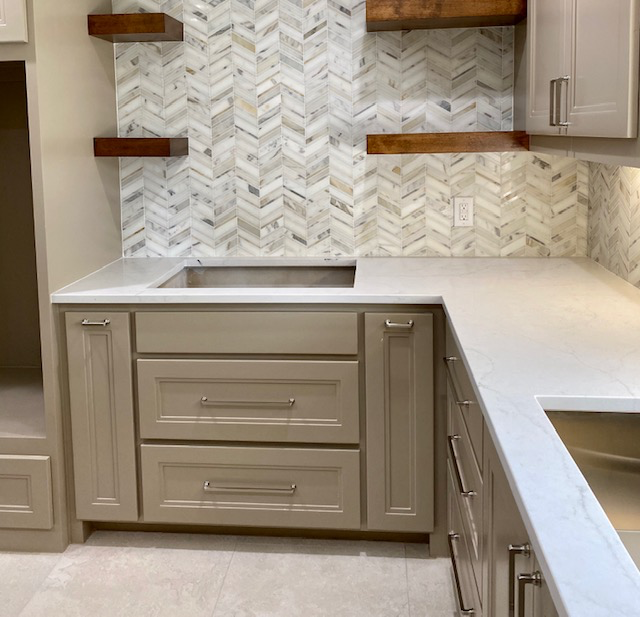Surface Prep Secrets: Your Guide to Professional Paint Results
Picture this: you’ve invested in premium painting, high-quality brushes, and dedicated an entire weekend to transforming your space. Yet six months later, you’re staring at peeling, chipping, or uneven patches that make your walls look worse than before you started. Sound familiar? You’re not alone—studies show that 80% of paint failures stem from inadequate surface preparation, not the paint itself.
The difference between a paint job that looks amateur and one that rivals professional work isn’t found in the brushwork or color selection. It’s in the hours of meticulous preparation that happen before the first drop of paint touches your walls. At Complete Construction, we’ve witnessed countless homeowners discover this truth the hard way, which is why we’re sharing the surface preparation secrets that separate stunning, long-lasting results from costly do-overs.
Whether you’re tackling your first DIY project or you’re a seasoned weekend warrior, understanding proper surface preparation will save you time, money, and frustration while delivering the professional-quality finish you’ve been dreaming of.

The Foundation of Every Great Paint Job
Professional painters spend roughly 70% of their time on surface preparation, and there’s a compelling reason for this allocation. Paint is only as good as the surface it adheres to, and even the most expensive premium paint will fail when applied to poorly prepared surfaces. Think of surface preparation as building a house—you wouldn’t construct walls on an unstable foundation, and you shouldn’t apply paint to an unprepared surface.
Clean surfaces are the cornerstone of successful paint adhesion. Dirt, grease, soap residue, and everyday grime create an invisible barrier between your paint and the wall, preventing proper bonding. Professional-grade degreasers and thorough cleaning protocols ensure your paint has the best possible foundation for long-term durability.
Deep Cleaning: More Than Just Wiping Down
Surface cleaning goes far beyond a quick wipe with a damp cloth. Kitchen walls accumulate cooking oils and grease that require specialized cleaners to remove completely. Bathroom surfaces harbor soap scum and mineral deposits that can interfere with paint adhesion. Living areas collect dust, pet dander, and everyday pollutants that create an invisible film over time.
The cleaning process should begin with removing all loose debris and cobwebs, followed by washing with appropriate cleaners for your specific surface type. Glossy surfaces, in particular, require careful attention since their smooth finish naturally resists paint adhesion. A thorough cleaning followed by light sanding creates the optimal surface texture for paint bonding.
Sanding and Smoothing: Creating the Perfect Canvas
Sanding serves multiple purposes in surface preparation, and understanding these functions helps you choose the right approach for your project. Beyond removing imperfections and creating adhesion-friendly texture, sanding eliminates minor scratches, nail holes, and surface irregularities that would otherwise telegraph through your finished paint job.
Different surfaces require different sanding approaches. Previously painted walls typically need light sanding with fine-grit sandpaper to break the surface tension and create better adhesion. Raw wood surfaces require more aggressive sanding to smooth grain patterns and remove mill marks. Drywall repairs need careful feathering to blend seamlessly with surrounding areas.
Priming: Your Paint’s Best Friend
Primer isn’t just undercoat—it’s a specialized product designed to create the ideal foundation for your topcoat. Quality primers seal porous surfaces, block stains, and provide uniform color base that ensures your final paint color appears exactly as intended. Different surfaces and conditions require specific primer types, from high-adhesion primers for glossy surfaces to stain-blocking primers for water damage or crayon marks.
The primer application process requires the same attention to detail as your final paint coat. Proper roller techniques, brush work for detailed areas, and appropriate drying times between coats ensure optimal performance. Skipping primer or using inferior products will compromise your entire paint job, regardless of the topcoat quality.
Professional Results Within Your Reach
Surface preparation might seem overwhelming, but breaking it into manageable steps makes the process approachable and even satisfying. The time invested in proper preparation pays dividends in both appearance and longevity, transforming your space with professional-quality results that you can take pride in for years to come. Contact us today to discuss your painting goals and discover how proper surface preparation can make all the difference in your next project.
